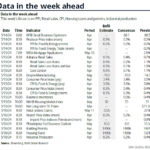
Canada has become one of the fastest growing economies in the developed world. The IMF in its most recent forecast notes that “there has been a very strong data release on monthly GDP in early 2017 for Canada, which bodes very well for growth in the early part of the year.”[1] GDP grew at an annualized pace of almost 4 per cent in the first quarter, according to the Bank of Canada. That’s the fastest growth among other G-7 economies.
One would expect that this robust start to the year would turn the head of bond investors in the direction of higher rates. So why has the bond market, across the entire yield curve, moved in exactly the opposite direction? Chart 1 maps the shift in the Canadian yield curve within the last 35 days, during the same time period that the economy was expanding rapidly. Specifically, the yield on a 2yr bond dropped 17 bps, yields on 5 yr bonds 35 bps and the yield on the 10 yr bond fell by 44 bps. These are dramatic shifts especially given that there was no external shock to the financial markets that would explain the rush to buy Canadian bonds.
Chart 1 Canadian Bond Yields Take a Dramatic Shift Downwards

Bond investors are always on the lookout for changes in the underlying conditions that would put current yields at risk. So, how have risk factors changed in such a short time that turned the head of bond investors so quickly? A few observations may provide some answers:














